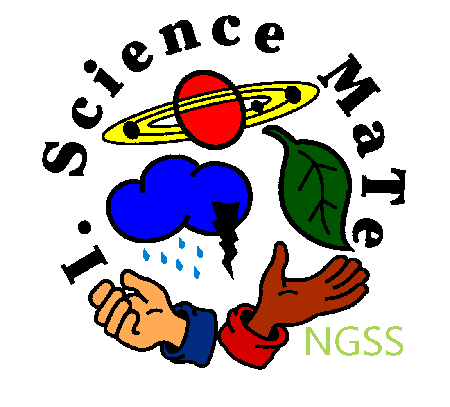|
|
Kindergarten Integrated NGSS |
||
OBJECTIVES: ·
VOCABULARY:
MATERIALS:
BACKGROUND:
Wind can be defined as "moving air." Windmills can be used for generating electricity or grinding grain or pumping water. Winds
push sailboats and windsurfers. The main reason we study wind is their importance in weather. Prevailing winds from the sea,
like monsoons, carry rain, and winds from the desert bring heat. Strong
winds can cause a lot of damage. Large cyclonic storms are called
hurricanes in the Atlantic, typhoons in the Pacific, cyclones around
India and willy-willies in Australia.
Winds are normally described by speed and direction. Wind speed may be
described in miles per hour, which is measured with an anemometer. Wind
causes the arms to rotate, and their speed can be measured. The
direction of air movement, is in part, controlled by air pressure.
Warmer areas tend to have a low pressure (warmer air is less dense,
molecules are farther apart, hence low pressure) and cooler areas tend
to have high pressure (cooler are more dense or compact).
High pressure is usually associated with dry weather because as air
sinks and warms, water in the air will evaporated. Low pressure is
usually associated with moist weather because as air rises and cools,
water vapor tends to condense.
PROCEDURE:
Ancient people had many beliefs about the winds. The ancient Greeks thought that the winds were the children of the sky and the Earth. Unfortunately, the winds were very unruly, so Zeus decided that they needed a dependable guardian. He chose Aeolus, who kept them in a hollow cliff far out to sea. When one of the gods called for a wind, Aeolus would punch a hole in the cliff wall with his spear. Then he plugged up the hole until it was time for the wind to return. The North Wind was ice and wild. The South Wind dripped water from his beard, and would spread fogs that the sailors would get lost in Zephyr, the West Wind. Zephyr was gentle wind. He would clear the sky of clouds and give beautiful weather. Tell students you are going to take them outside to find the direction of the wind. If there is no wind then you should be able to detect that by lack of movements. Before you go outside practice with the students how to determine. a. Wet Finger test. Wet your finger (usually you lick the finger with your tongue or you can have them wet their finger on a sponge bowl of water) and blow on it. It feels cool. b. Bubbles. Give groups a small cup of dish detergent. Use a wire with a loop at the end (or a pipe cleaner) with a loop at the endstraw and dip it into a soapy mixture. Then blow quickly. c. Pinwheel. It you turn the pinwheel directly into the wind it will move, if you do not, it will not spin. Have the students inside make their own wind by either blow on it, or capturing the air by moving the pinwheel. A "figure 8" motion is perfect to create wind. Please note: This is difficult if children have never used a pinwheel.
|
|||
